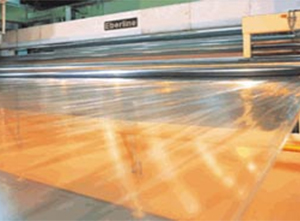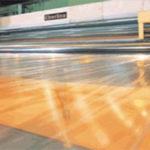How Reflective Window Film Is Made?
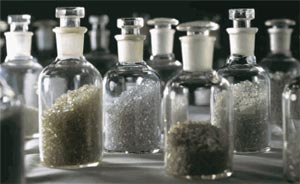
The next phase of construction is to add dyes or metals to the polyester sheeting. The materials chosen will be determined by the desired performance of the film and its application. Dyed films absorb a lot of heat, and therefore are generally used for automotive applications. Metallized films work in the opposite, rejecting most of the heat rather than absorbing it and are most common for residential/commercial films.
Dyeing – The polyester film is coated and then cured in heated ovens. The pigments are impregnated into the polyester by the heat. The color becomes a permanent part of the film and will not wash off.
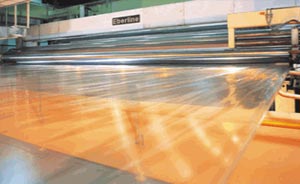
Evaporative Coating – A crucible containing metal is heated until the metal melts and forms a gas cloud. This metal gas is deposited on the film and bonds as soon as it cools. Aluminum is the metal of choice because of its low melting point.
Electron Beam Coating – This method is similar to the evaporative method except that a beam of high-energy electrons is aimed at the source of metal to heat it. This energy causes the metal to vaporize and form a cloud of gas that deposits on the polyester sheet.
Sputtering – An electrically charged gas, such as argon, bombards the metal and frees the molecules. These molecules are deposited onto the film and layered side by side, providing extremely thin and precise coatings. This coating is so tight that the water used during installation cannot evaporate, which causes a hazy look. This hazy look will go away after two to three weeks of curing.
Next, a scratch-resistant coating is applied to the side that will face the interior of the home. This coating acts as a protective barrier against dust and debris or for anything that may come into contact with the film. A great scratch-resistant coating is a key element for longevity.
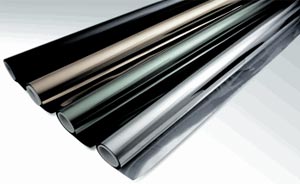
Finally, the film is covered with a liner over the adhesive that is peeled away during the installation process. The liner acts as a guard against contamination from dust and debris. Multiple plies may be joined together to provide extra performance and durability.
Solar Control Films, Inc. Resources
To shop our complete line of window films and installer accessories visit: WindowTintPro.com For more information about our superior window film, call us Toll Free at 877-989-3456 or fill out the information below and one of our window film specialist will be in contact with you immediately.


